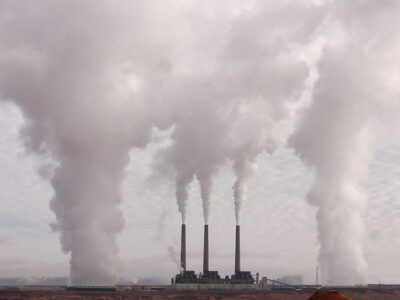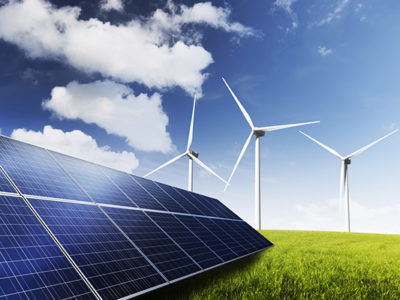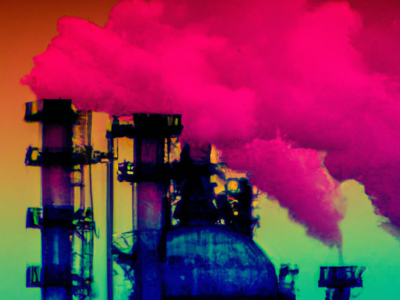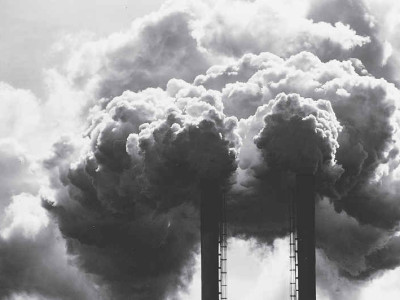Air Quality
Biden’s Proposed Power Plant Rule is a Solid First Step
The electric power sector remains 30 percent of the nation’s carbon dioxide emissions, and this rule can incentivize the push towards renewables.
On May 23, the Environmental Protection Agency (“EPA”) proposed emission limits and guidelines for carbon dioxide from fossil fuel-powered plants. To avoid the same fate as the Obama Administration’s Clean Power Plan, which was struck down by the conservative Supreme Court in West Virginia v. EPA last year, the new draft rule does not determine …
Continue reading “Biden’s Proposed Power Plant Rule is a Solid First Step”
CONTINUE READINGNot Just About the Climate
The benefits of the energy transition transcend climate.
The main reason to control carbon is to protect the climate. But cleaning up the energy system has plenty of other benefits. Those benefits will flow to people in rural areas as well as urban ones, to national security and international development, and to nature itself. To begin with, there are the health benefits of …
Continue reading “Not Just About the Climate”
CONTINUE READINGLocal Authority Over Oil Drilling Heads to California Supreme Court
Cities and counties have long held authority to decide where and whether to allow oil and gas exploration and extraction. The state’s high court can make that crystal clear.
If California residents decide by voter initiative to limit land uses for oil and gas extraction in their county, can fossil fuel businesses turn around and claim state preemption to overturn the voice of the voters? That’s what is at issue in a case that’s headed to the State Supreme Court. Oral arguments in this …
Continue reading “Local Authority Over Oil Drilling Heads to California Supreme Court”
CONTINUE READINGNew York’s New Environmental Justice Law
Unless amended or carefully implemented, there’s a risk the law could hurt the communities it’s meant to serve.
New York has enacted what may be the country’s most stringent environmental justice law. The state deserves credit for its commitment to remedying the unfair pollution burdens placed on disadvantaged communities. The law is so broadly worded, however, that it may have the potential to prevent economic development that would aid those communities, or even …
Continue reading “New York’s New Environmental Justice Law”
CONTINUE READINGAir Quality Watchdog Agrees to Get Tougher on Refineries
There’s a favorable settlement in the case brought by Earthjustice on behalf of EYCEJ with help from UCLA law students.
Last year, the South Coast Air Quality Management District was accused of not properly enforcing a state law that requires petroleum refineries to install air-quality monitoring systems around their perimeter. Essentially, the air quality watchdog exempted smaller refineries from having to follow the rules. Now, the SCAQMD has agreed to reverse course and move to …
Continue reading “Air Quality Watchdog Agrees to Get Tougher on Refineries”
CONTINUE READINGEPA’s Power Plant Rule is Not Bold. It’s What’s Required.
It’s important to remember the regulatory history—and the growing urgency—of limiting climate change-related carbon pollution from power plants.
Today’s the day for the long-awaited release of Environmental Protection Agency regulations to tackle planet-warming pollution by the nation’s power plants. (Read the announcement here and the full text here.) The EPA is proposing a new standard for fossil fuel-fired power plants to avoid 617 million metric tons of carbon dioxide through 2042. For weeks, …
Continue reading “EPA’s Power Plant Rule is Not Bold. It’s What’s Required.”
CONTINUE READINGThe Car Rule and the Major Questions Doctrine
Claims that the new rule violates the doctrine are groundless.
Ever since the Supreme Court decided West Virginia v. EPA, conservatives and industry interests have claimed that just about every new regulation violates the major question doctrine. When the Biden Administration ramped up fuel efficiency requirements through 2026, ideologues such as the Heartland Institute and states like Texas were quick to wheel out this attack. …
Continue reading “The Car Rule and the Major Questions Doctrine”
CONTINUE READINGThe Revenge of the Lawyers
Economists ousted lawyers (and law) from their central role in the regulatory process. That’s changing.
As you’ve probably heard, the Biden Administration has proposed aggressive new targets for greenhouse gas emissions from new vehicles. That’s great news. One really important aspect of the proposal relates to the justification for the proposal rather than the proposal itself. Following a recent trend, the justification is based on the factors specified by Congress …
Continue reading “The Revenge of the Lawyers”
CONTINUE READINGHow Garden-Variety Air Pollution Regulation Promotes Environmental Justice
Cleaning up our nation’s air benefits the disadvantaged most of all.
Evidence is mounting that air pollution regulation is an effective way of reducing health disparities between disadvantaged communities and the population as a whole. The basic reason is simple: Air pollution is the biggest environmental threat to poor communities and communities of color. As the American Lung Association has said: “The burden of air pollution …
Continue reading “How Garden-Variety Air Pollution Regulation Promotes Environmental Justice”
CONTINUE READINGWhy the Bay Area’s Zero-Emission Appliance Rule is a Big Deal
BAAQMD’s trailblazing rule will ban the sale of new gas furnaces and water heaters to combat nitrogen oxide pollution. It marks a big victory for public health and the planet.
Air quality officials in the San Francisco Bay Area just made history by moving to adopt the nation’s first rules phasing out new gas-fueled water heaters and furnaces in homes and businesses within about eight years. This action serves as a major step in the effort to curb health-harming and planet-warming emissions from buildings. Several cities …
Continue reading “Why the Bay Area’s Zero-Emission Appliance Rule is a Big Deal”
CONTINUE READING













